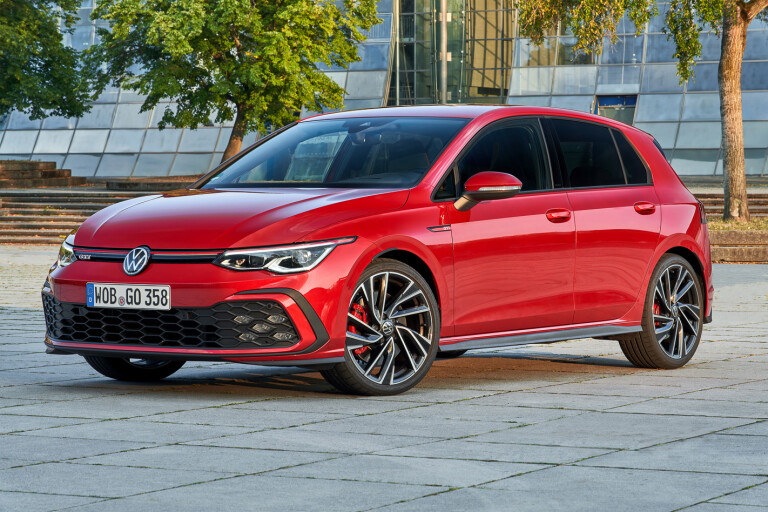
Front-wheel drive vs rear-wheel drive vs all-wheel drive
Automotive history is adept at repeating itself and while virtually all technological trends have resurfaced many times over the course of the last 100 years, there are significant milestones for each ground-breaking innovation.
The same is true for drivetrains and driven wheels.
Notwithstanding the odd exception, rear-wheel drive was the staple for the majority of passenger and commercial vehicles as far back as the birth of the car as we know it today.
In the late 1950s, and after a number of niche models, it was the Mini that established the now-commonplace transverse engine, front-wheel drive layout as a genuinely practical proposition.
Then, in 1980, Audi’s Quattro was the pioneer that brought four-wheel drive from the off-road arena into the world of on-road high-performance cars.
These three radically different drivetrain approaches have now proliferated into the model ranges of virtually all brands, offering a huge amount of choice for the consumer.
Here are the key differences to consider when choosing what’s right for you.

REAR-WHEEL DRIVE
Advantages
Many regard rear-wheel drive as the purist’s solution and the only layout for optimum driving enjoyment.
The theory goes that by driving the rear wheels, the front wheels are allowed to get on with steering, and a majority of the braking, for complete and balanced driving manners.
Generally speaking, driving the rear wheels also promotes a more inherent tendency for oversteer on the limit, which is considered more fun and manageable in the right hands than the understeer often associated with front-drivers.
The engine in a rear-wheel drive is typically oriented longitudinally (if located at the front), which allows the installation of a larger engine provided the engine bay is long enough to accommodate it.
Disadvantages
The natural tendency to oversteer can be unsafe for inexperienced drivers (although it is up to the driver to maintain control of any vehicle given the circumstances), but modern electronic stability systems are very effective at keeping cars on the straight and narrow.
Sending power from a front-mounted engine to the rear wheels requires a propshaft and rear differential, which take up space and add more weight. Most rear-drives have a ‘transmission tunnel’ which robs some cabin room along the middle of the car.

FRONT-WHEEL DRIVE
Advantages
By confining the bulky engine, gearbox, driveshafts and steering to the front end of the car, the rest of the vehicle’s space is freed up for occupants and luggage.
The overall vehicle package can also be made smaller and virtually all vehicles in the compact segment use a front-engine, front-wheel drive layout.
Disadvantages
For high-performance applications, getting power down to the road through the front wheels causes more problems than a rear-driven car, and wheelspin is more likely, particularly on slippery surfaces such as mud and ice.
Another typical front-drive trait in more powerful vehicles is an effect called ‘torque steer’ which is when the car pulls to one side with heavy throttle application. Many manufacturers have attempted to counter the effect with a number of solutions, and with varying levels of success.
Front-drive cars use a device called a ‘constant velocity’ joint or CV joint which allows the drive shaft to turn with the steering wheels but the limited dexterity of the CV joint also has a limitation on maximum steering angle and turning circle.
With the entire drivetrain over the front axle, front-wheel drives have a natural tendency towards understeer, which is exacerbated with the application of too much power, just as excessive power encourages oversteer in rear-drives.
It is also harder for engineers to distribute the vehicle weight equally over the axles, which effects handling.

ALL-WHEEL DRIVE
Advantages
In a word – traction. With all four wheels sending torque to the surface, all-paw cars offer a safety and performance advantage compared with two-wheel drive cars, particularly in adverse weather conditions and on loose surfaces.
Acceleration from a standing start is generally faster in high-powered vehicles with the maximum power of the engine shared between a larger tyre contact patch.
The traction advantage also makes four-wheel drive cars more suitable for towing larger loads or on slippery surfaces where the extra ground-clearance of an SUV is not necessary.
Disadvantages
With an extra axle to drive, the additional differential and pair of half-shafts makes a four-wheel drive system heavier than two-wheel drive systems and this will have an effect on fuel consumption and possibly handling.
There are systems that disconnect one pair of wheels when they are not required which reduces rotational losses but they cannot reduce the consumption caused by carrying around extra weight.
The extra differential and drive shafts can also increase the amount of service items that require attention when in for maintenance work.
Myth...
All-wheel drive systems do not increase the ‘grip’ of a tyre. Four-wheel drives have a traction advantage over two wheel drives because all four tyres can contribute but, ultimately, the grip of a vehicle is dictated by the performance of the rubber on the road.
This particularly applies to during cornering where the speed of the car is governed, not by the driven wheels, but more by the weight-distribution of the car, centre of gravity, tyre performance and suspension system.
There are exceptions to all of the examples given, and the above is intended only as a general guide to help you start thinking about which layout best fits your requirements, but as always, the best approach is to get out there and start test driving.


COMMENTS